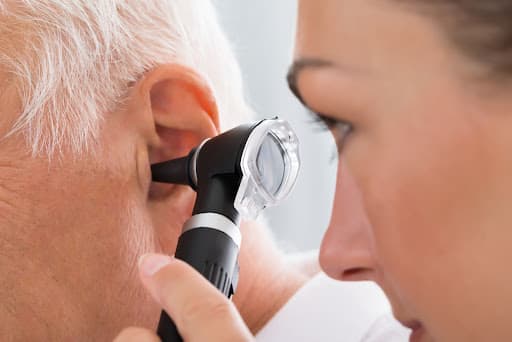Tympanoplasty and mastoidectomy are two surgical procedures that are often performed in conjunction with one another. Oftentimes, this can be referred to as a tympanomastoidectomy. Together, these procedures can help patients with recurring ear infections and difficulty hearing.
A tympanoplasty is a surgical procedure intended to fix a ruptured eardrum. A mastoidectomy, on the other hand, involves the removal of diseased mastoid air cells from the mastoid bone. Patients may consider undergoing these procedures together if they experience recurring ear infections that result in difficulty hearing.
When is this Procedure Necessary?
These procedures are often performed together because many patients can benefit from both. Patients who have recurrent ear infections that do not respond to antibiotics or eardrops may consider this procedure. In addition to treating infection, this procedure can significantly improve an individual’s ability to hear.
Patients may be a candidate for this joint procedure if:
They experience frequent ear infections
They have a ruptured eardrum
They have not responded to conservative treatments
Ultimately, the only way to determine whether a joint tympanoplasty and mastoidectomy procedure is right for you is to consult your doctor. They can perform diagnostic tests and make informed suggestions.
Preparing for Your Procedure
During this procedure, the patient will be placed under general anesthesia to ensure their comfort. The surgeon will begin by making incisions inside and behind the affected ear. The surgeon will then perform both a tympanoplasty and a mastoidectomy before placing the graft over the area and closing the incision.
Recovery takes a little while and patients may experience some discomfort in the days following. Additionally, it is essential to note that a patient’s ability to hear after the procedure is not necessarily dependent on the surgery itself, but rather on how the eardrum heals during the recovery period. Patients are typically given pain medications to manage any discomfort they may experience.
Patients should ensure to follow all directions provided by the surgeon. This may include but is not limited to:
- Do now blow your nose for at least two weeks post-op
- Keep water out of the ear
- Do not get on an airplane, as the pressure can irritate the ears
- Take antibiotics as directed
Tympanoplasty and Mastoidectomy with Smith Medical
At Smith Medical, we understand the complexities of healthcare. In many cases, procedures and treatments are unaffordable because of their high price tags. Our direct pay option allows patients without insurance access to quality healthcare. It is Smith Medical’s mission to provide our patients with the accessible, transparent, and quality care they deserve.

